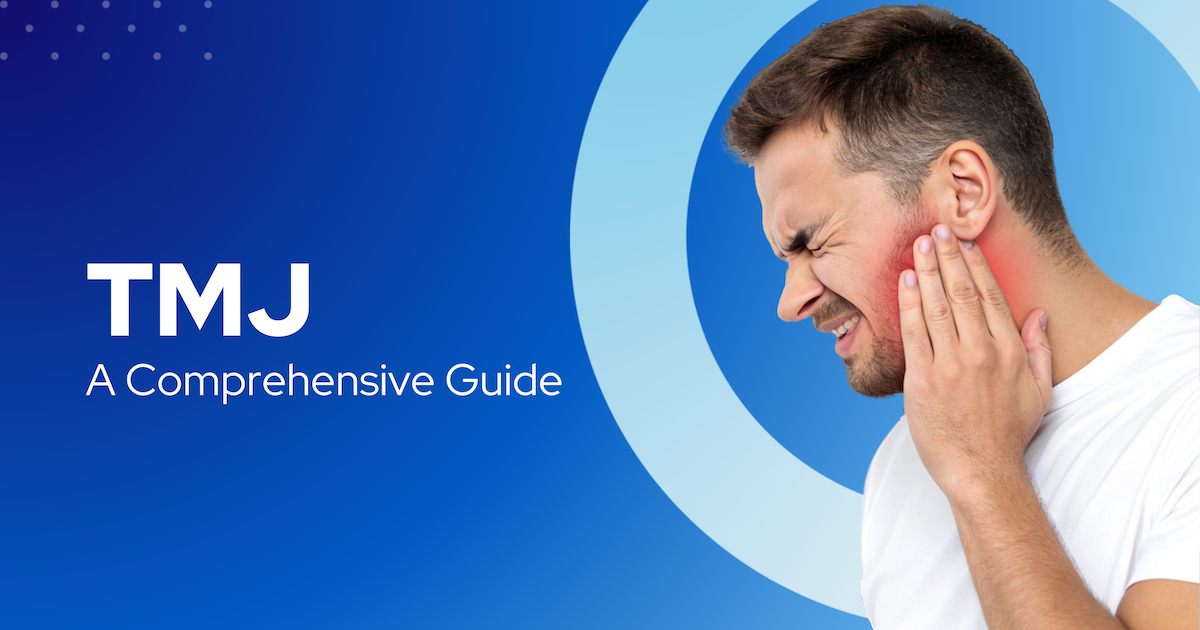Temporomandibular joint (TMJ) disorders represent a complex set of conditions affecting the jaw joint and surrounding muscles. According to the National Institute of Dental and Craniofacial Research (NIDCR), these disorders can cause severe pain and discomfort that can become permanent if left untreated. This comprehensive guide examines the intricate physiology of the TMJ, current research on contributing factors, and evidence-based approaches to treatment.

The Complex Anatomy of the TMJ
The temporomandibular joint stands as one of the most sophisticated joints in the human body. Unlike simple hinge joints, the TMJ combines both rotational and translational movements, allowing for the complex motions required for speaking, chewing, and swallowing. At its core, the TMJ relies on several key anatomical components working in harmony. The articular disc, a specialized fibrocartilage structure, acts as a crucial cushion between the temporal bone and mandible, enabling smooth movement while absorbing the substantial pressures from daily jaw activities. Surrounding this disc, the synovial membrane produces vital synovial fluid that lubricates the joint surfaces and provides essential nutrients. The lateral pterygoid muscle works in concert with these structures, providing critical support for jaw opening and stabilization.
Neuromuscular Integration in TMJ Function
The TMJ's operation relies on an intricate dance between neurological and muscular systems. The trigeminal nerve, also known as cranial nerve V, serves as the primary conductor of this symphony, providing essential sensory and motor control to the TMJ region. Through specialized nerve endings in the joint capsule, the trigeminal nerve maintains constant awareness of jaw position and movement, while its pain-sensing capabilities alert the body to potential damage or stress.
The masticatory muscles work together with remarkable precision. The temporalis muscle provides fine control during chewing movements, while the masseter generates the powerful force needed for biting. Working alongside these, the medial pterygoid assists in closing the jaw, and the lateral pterygoid maintains precise control over forward movement and stabilization.
Understanding TMJ Pathophysiology
Recent research has unveiled critical insights into how TMJ disorders develop. The National Institutes of Health has identified inflammation as a central player in these conditions. When inflammatory processes take hold in the joint, they can trigger a cascade of effects including pain, swelling, and reduced function. This inflammation may arise from various sources, including physical stress, autoimmune responses, tissue damage, or mechanical wear over time.
The biomechanics of jaw position and muscle function create another layer of complexity in TMJ health. The position of the tongue plays a surprisingly significant role in this system, influencing everything from jaw alignment to muscle tension patterns and overall oral posture. This understanding has led to innovative approaches in treatment, including the development of tongue training devices.
The Airway-TMJ Connection
A fascinating aspect of TMJ disorders involves their relationship with breathing and airway function. The American Dental Association has recognized the importance of considering breathing patterns when evaluating these conditions. The way we breathe can significantly impact jaw position, while airway obstruction often leads to increased muscle tension. The tongue's position proves crucial in this relationship, as it influences both airway patency and TMJ function.
Evidence-Based Treatment Approaches
Following NIDCR recommendations, modern treatment approaches favor conservative, reversible interventions that address multiple aspects of TMJ dysfunction. Myofunctional therapy has emerged as a promising treatment modality, with devices like Spot Pal leading the way in addressing underlying factors. These innovative approaches work by promoting proper tongue positioning, supporting optimal jaw alignment, and encouraging healthy breathing patterns - all while helping to reduce muscle tension that can exacerbate TMJ problems.

Current Research Directions
The field of TMJ research continues to evolve, with new studies constantly emerging to deepen our understanding of these complex disorders. Current research focuses on the integration of multiple treatment approaches, recognizing that TMJ disorders often require a comprehensive solution that addresses both symptoms and underlying causes. Innovative devices like Spot Pal represent the cutting edge of this research, offering non-invasive solutions that work with the body's natural mechanics to promote healing and proper function.
Looking to the Future
As our understanding of TMJ disorders continues to grow, treatment approaches are becoming increasingly sophisticated and personalized. The focus has shifted from merely managing symptoms to addressing the root causes of TMJ dysfunction. Tongue training devices and myofunctional therapy represent a promising frontier in TMJ treatment, offering hope to those suffering from these challenging conditions.
The journey to understanding and treating TMJ disorders requires considering multiple physiological systems and their interactions. As research continues, treatment approaches increasingly focus on addressing underlying causes rather than just managing symptoms. Modern solutions like tongue training devices represent one approach to addressing these fundamental aspects of TMJ health.

Share:
Tongue Posture: The Hidden Key to Better Breathing, Speech, and Sleep
Mouth Breathing: A Hidden Health Challenge and Its Solution